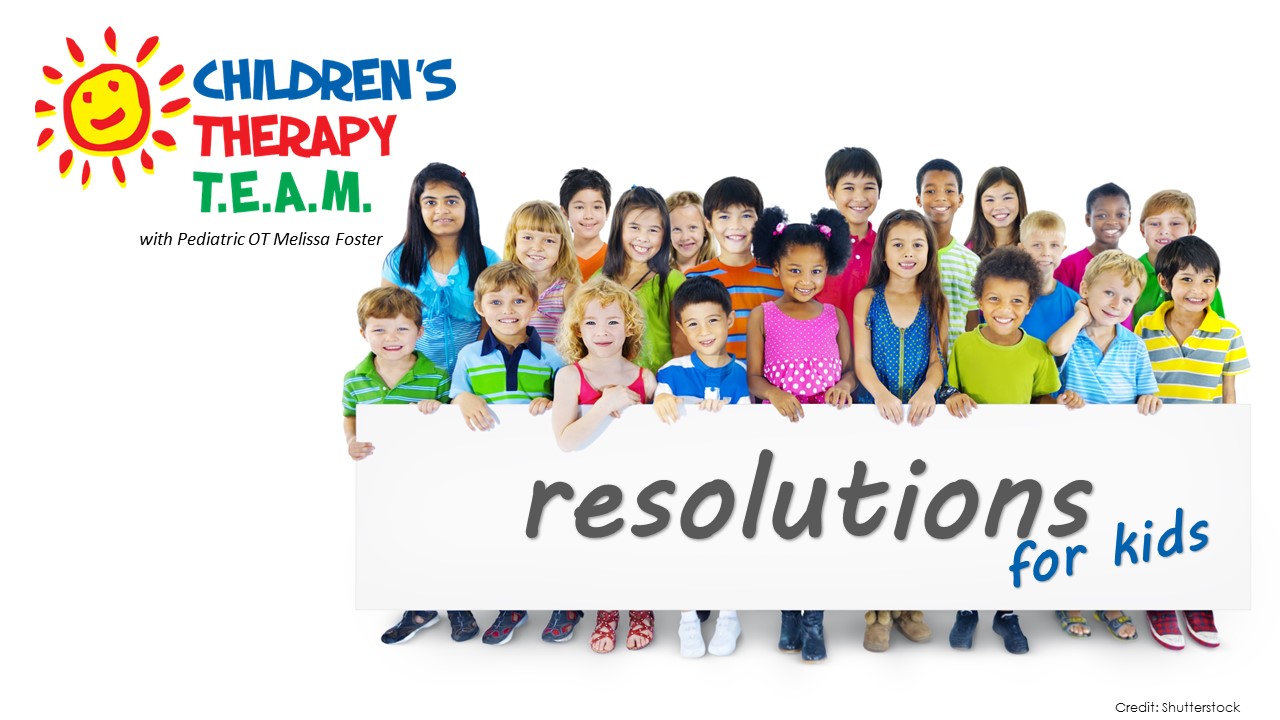
Dear Melissa,
In the spirit of the New Year, what do you think about elementary-age children making New Year’s resolutions for themselves?
I am a huge fan of resolutions, not just at New Year’s, but constantly. I am always telling my children that we all have areas that we are working to improve, every day: to get more exercise, to eat more plants and less “junk food”, to get enough sleep, to do more deep breathing and have more patience. Everyone has areas that need tweaking.
The following are some very attainable, child-appropriate resolutions for kids. Whether your children are toddlers or teens, these ideas apply to them all (and most of them apply to us grown-ups as well!). The resolution recommendations below are mostly taken from older blogs, and are placed in order of importance. Don’t worry; trying them all is way too much! But sit down with your family, pick one or two, and see what happens!
More sleep: The National Sleep Foundation states that children have the following sleep requirements (either all at once during the night, or through night sleep plus naps)
- 1-2 years = 11-14 hours
- 3-5 years = 10-13 hours
- 6-13 years = 9-11 hours
- 14-17 years = 8-10 hours
- 18-25 years = 7-9 hours
When we don’t get enough sleep, we are grouchy, have poor attention, and simply just don’t feel well. Getting an appropriate amount of sleep is definitely on my own personal to-do-list this year! If your child has trouble falling/staying asleep, take a peek at past blogs for advice (Sleep Training 101, Sleep Worries), or discuss this with your child’s pediatrician.
More movement: Research has shown that as little as a 5-minute brisk walk can serve to boost your mood. In addition, research has shown that exercise can help alleviate the symptoms of long-term depression, anxiety, and ADHD, often even better than prescription medications (American Psychological Association). Find something you like to do together with your family or a friend. It doesn’t have to be “formal” exercise. Animal walks (such as crab walking, bear walking, etc.), dance parties, and balloon volleyball can all be done as a family, inside or outside.
Less screen Time: This one will probably be met with some resistance, but I have faith that you can do it! The American Academy of Pediatrics recommends less than 2 hours of screen time per day, with zero screen time for children under 2 years. However, statistics show that the average 8-10 year old has 8 hours of screen time per day! This is a huge difference from recommended time! Higher rates of screen time are linked with obesity, decreased attention, behavior problems, sleep difficulties, and poor academic performance.
Eat more plants: There is so much debate on what is a “good” diet for your kids. However, we could all agree that generally limiting fast foods and processed foods are good things. In my house, I always say, “pick a plant,” and we have some type of plant, either fruit or vegetable, with every meal. Giving your child some choice in the matter of what plants are served can be a big help to getting them to actually eat it. Feeding experts with the Food Chaining Program say that veggies are an “acquired taste”. Don’t give up on the veggies, but know that you may be more successful with fruits, and just keep offering them both! Want more help for your picky eater? See my previous blog on this topic (Picky Eaters).
Diversify your diet: Ideally, this would be diversity to include healthier items, but not necessarily. Many children (and even adults) get used to seeing the same ingredients prepared in the exact same way, and any deviation from this causes panic and/or refusal. For example, I have a kiddo that will eat steamed broccoli all day long, but refuses roasted broccoli. So, think of ways to change up even familiar items. Think pigs in a blanket instead of a corn dog; a fried chicken leg instead of a chicken nugget, roast veggies instead of steaming, throw preferred veggies in a pasta; you get the idea!
Dinnertime togetherness: Ann Fishel, a Professor at Harvard Medical School, states that this is the “Most important thing you can do with your kids.” And it is really simple. Just sit down and eat! Yes, yes, with all of the after school activities, friend time, etc., it can be hard to make the time. But check out the benefits. According to Fishel, family dinners boost vocabulary skills in younger children, (even more than being read to), are a powerful predictor of academic performance, promote healthier eating, and lower the risk of negative teenage behaviors such as smoking, binge drinking, drug use, school difficulties, sexual activity, depression, and eating disorders.
More snuggle time. So, I confess, I didn’t find any real research on this one. And, I put this one last on the list because hopefully you are already doing this one to the max. Our kiddos grow up too fast. No matter how big your “babies” are, make time to snuggle them! Even your oldest “babies” might be convinced to share a blanket on the couch while watching the newest thriller if you make the popcorn!
Have you made New Year’s Resolutions for your kiddos?
If so, please share! Just email: share@childrenstherapyteam.com.
Resources:
How much Sleep do we really need? National Sleep Foundation, accessed January 2015.
Picky Eaters, Children’s Therapy TEAM Blog, Melissa Foster, January 12, 2015.Sleep Training 101, Children’s Therapy TEAM Blog, Melissa Foster, November 3, 2014.
Sleep Worries, Children’s Therapy TEAM Blog, Melissa Foster, August 18, 2014.
The exercise effect. American Psychological Association, posted December, 2011.
The most important thing your can do with your kids? Eat dinner with them. Washington Post, January 12, 2015.
Food Chaining with Cheri Fraker and Laura Walbert.
